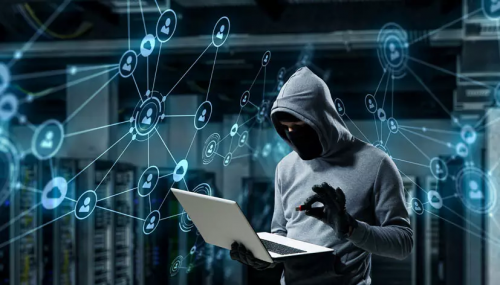


A Cyber Attack is the equivalent of a real-life breaking & entering. Suppose someone breaks into your house, they can steal your assets, rearrange your furniture, install hidden cameras to later spy on you, use your house as a steppingstone in a plan to break into another one, or even change the locks and deny you access until certain conditions have been met.
Let's break the metaphor and get right into the technicalities of a Cyber Attacks, starting with the definition.
It is a malicious and intentional behavior driven by an individual or an organization in an attempt to break the wall of another individual or organization's computer or network and get hold of their data following different methods according to the attacker's goal. He or she can steal, alter, expose, disable or destroy information through this unauthorized access to the system.
They literally happen every day! Enterprises around the world are being hit by cyber attacks on a daily basis, and to quote former Cisco CEO John Chambers:
“There are two types of companies: Those that have been hacked, and those who don’t know they have been hacked.”
From cybercrime to cyberterrorism, motivations can vary, but we can safely sort them into three categories: personal, political, and criminal.
When it comes to personal matters, unsatisfied employees or former employees might set a goal to disrupt a company's system by launching a cyber attack. Or even more personally, your angry ex might want to get hold of your social media accounts to expose you publicly.
As for criminal cyber attacks, they are often driven for financial purposes by stealing a company's money directly or stealing its data and asking for a ransom.
Have you heard of "Hacktivism"? That's the third category of motivations – Socio-Political. It's when the attackers are driven by a cause, and they often make their attack public.
There are many other motives to a cyber attack, including spying on competitors, espionage, or even stealing a test or changing the marks on a student's transcript.
After setting a goal, the attacker chooses a certain type of a cyber attack that is compatible with his or her objective. Some types of cyber attacks include:
It is actually named after the Trojan horse, following a similar strategy to create a backdoor vulnerability in the victim's system and to gain remote and almost total control. Attackers often use it to create a botnet; infected devices attackers can control as a group without the owner's knowledge.
Attackers can use JavaScript, Microsoft VCScript, ActiveX, or Adobe flash to insert a code in the victim's website or application script to gain access to users' information.
For this type of cyber attack, the attacker can use one infected device or even multiple compromised devices – in that case, it's called a Distributed Denial of Service DDoS – to flood the system/network with traffic, reducing its performance and rendering it unable to respond to legitimate service requests.
Instead of hacking the system, in this method, attackers shift their focus to the network connection with the server, creating a communication channel with another unknown server to silently extract data.
This is a broad name for a malicious software to be used for multiple functions, all of which take advantage of a system/network vulnerability to install it. The attacker often lures the victim with a link and once the software is in, it can do the following:
In this method, the attacker sends fraudulent communications that appear to come from a reputable source. With that, he or she can steal important information like credit card and log in info, and even install malware into the device.
This attack is devoted to data-driven applications where attackers can manipulate the backend database to display classified information and perform actions that users did not ask for.
In this attack, the hacker targets an unknown vulnerability to the vendor, and creates an exploit while the defenses are down. In other words, the attacker takes advantage of the window between being aware of the vulnerability and taking defensive actions.
This method is used for spying, and so it is commonly known as the eavesdropping attack. The attackers interrupt a connection and insert themselves in what should be a two-man transaction via an unsecure public Wi-Fi or by breaching a device with malware so they can filter and steal data.
Read more: Cybersecurity Terminology: 30 Terms You Must Know!
With everything said, a cyber attack is surely not something to take for granted especially in this era. Cybercriminals are increasingly targeting private enterprises and government institutions worldwide to the point that 2021 registered the highest costs of data breaches of 4.24 million USD in 17 years.
Cybersecurity is of utmost importance no matter the size of your business; the very first thing you need to ensure is data and network protection.
Ctelecoms offers a wide range of Cybersecurity solutions to protect your business from any cyber attack.
This is not a matter to ignore, explore our services, and get in touch: https://www.ctelecoms.com.sa/en/Form15/Contact-Us